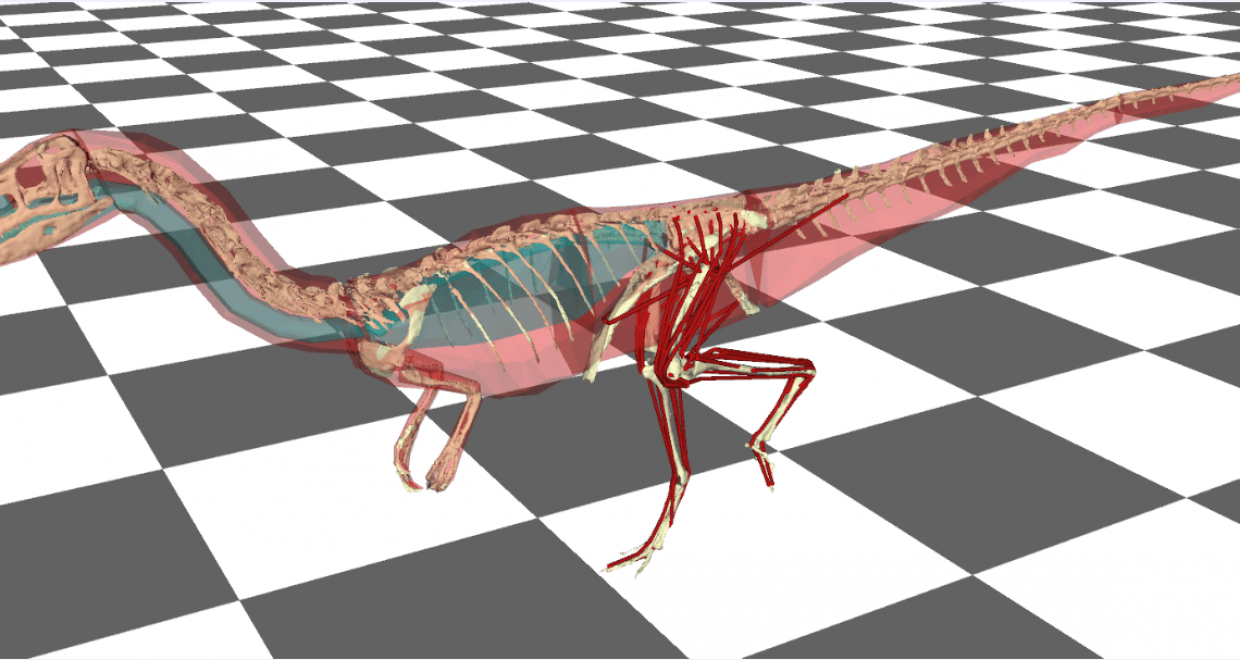Building your own virtual dinosaur
Extinct dinosaurs are popular subjects in many CGI-animated movies, documentaries and TV shows, but how they are portrayed as living, breathing animals often depends on a lot of guesswork. How they moved, in particular, is the subject of much speculation and controversy, not least because many of them were built so differently compared to any animal alive today. There are no living examples of giant, seven-tonne bipeds for instance, so how a tyrannosaur might have stood, walked and ran (and whether if could even have run at all) has always been in the realm of inference—but not beyond the realm of science.
In the absence of modern species to facilitate direct comparison, palaeontologists, anatomists and biomechanists have increasingly turned to the laws of physics over the past few decades as a way of tackling these intriguing questions. Physical principles transcend time and space, and so can be applied to phenomena and systems that existed deep in the past; Newton’s laws held just as well 250 million years ago as they do today. The rapid burgeoning of digital and computer technologies has also greatly quickened the pace at which questions of function and behaviour in the fossil record are being addressed in a quantitative and mechanistic manner. However, these developments have been so rapid that there has been no proposed consensus or standards on how techniques and software – primarily developed in medical and animation industries – should best be applied to the patchy datasets that fossils provide.
In a new study published open access in Paleobiology, palaeontologists and biomechanicists from the Royal Veterinary College and Hull York Medical School (United Kingdom) have laid the groundwork for achieving such a consensus moving forward. Building upon and synthesizing the work of many before them, they have outlined a step-by-step approach for how static fossil bones can be transcribed to the digital world and reassembled in virtual reality. Their approach is grounded as much as possible in the laws of physics and mathematical objectivity, meaning that models can be built and studied in a repeatable and transparent fashion. Using software originally developed for studying injuries and disabilities in humans, digital muscles are also able to be reattached to the bones, and the resulting musculoskeletal models can be used to digitally bring extinct species ‘back to life’.
Using the early dinosaur Coelophysis (wolf-sized, distant cousin of Tyrannosaurus) as a case study, the team built a sophisticated model of the animal using their new framework. Furthermore, they developed and released an open-source set of computer software to help anyone else do the same with their own favourite species. Through simulations, it was shown that Coelophysis would likely have been a competent runner, and used a more upright (straight-legged) posture when doing so. This stands in contrast to the posture used by the early dinosaurs’ living descendants, the birds, which use a notably flexed (bent-legged) posture during standing and moving. Thus this study not only advanced methods, but also gave sophisticated insight into how a dinosaur moved.
“How to build a dinosaur: Musculoskeletal modeling and simulation of locomotor biomechanics in extinct animals”, by Peter J. Bishop, Andrew R. Cuff and John R. Hutchinson has been published Open Access in Paleobiology, published by Cambridge University Press on behalf of the Paleontological Society.
Read other blog posts from Paleobiology here
or view all blog posts from the Paleontological Society Journals






